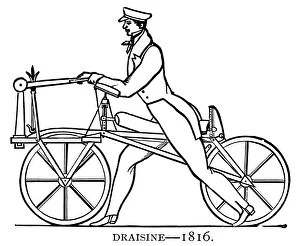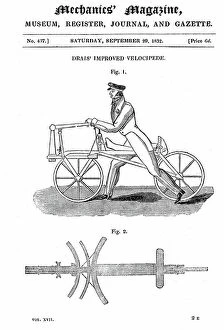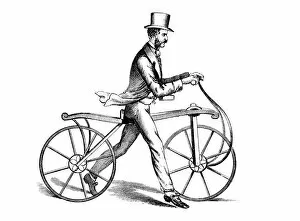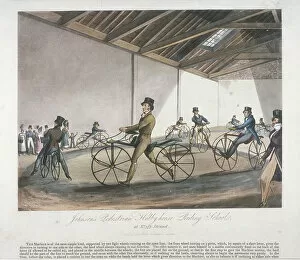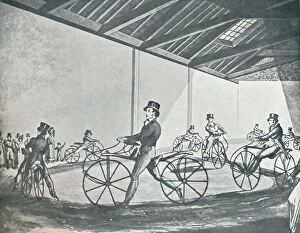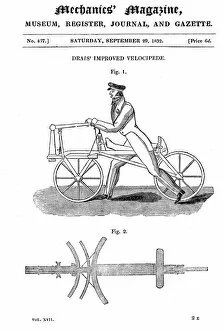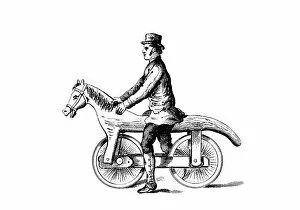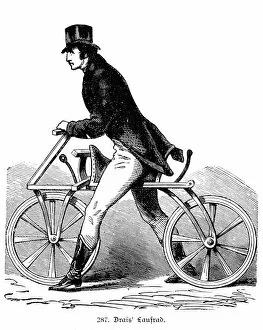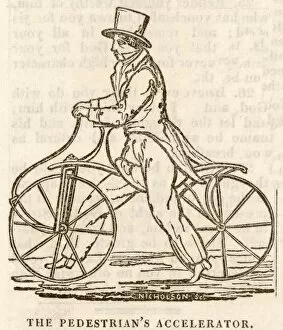Drais Collection
"Drais: Pioneering the Evolution of Bicycles in the 19th Century" Step back in time to witness the birth of a revolutionary invention - the draisine
For sale as Licensed Images
Choose your image, Select your licence and Download the media
"Drais: Pioneering the Evolution of Bicycles in the 19th Century" Step back in time to witness the birth of a revolutionary invention - the draisine, also known as the pedestrian curricle. Invented by Karl von Drais de Sauerbrun in 1816, this two-wheeled wonder marked a significant milestone in transportation history. Before pedals and chains dominated bicycles, there was the dandy horse. Introduced around 1818, it allowed riders to propel themselves forward using their feet on the ground. This precursor to modern bikes showcased early attempts at harnessing human power for locomotion. But it wasn't just leisurely rides that intrigued inventors; military applications were also explored. The evolution of war machines led to military bicycles, which gradually transformed into efficient tools for soldiers on wheels. These lithographs depict continuous advancements towards what we now recognize as modern military bicycles. In bustling London of 1819, Johnson's Pedestrian Hobbyhorse Riding School became a hub for enthusiasts eager to master this new mode of transportation. Located at Westminster's Strand, it offered an opportunity for people from all walks of life to experience these innovative contraptions firsthand. Meanwhile, across Europe and beyond, various iterations emerged. French post service even adopted velocipedes or draisines instead of horses by 1818. Baron von Drais himself exhibited his bicycle design in Paris that same year - an artistic portrayal showcases his visionary creation. Notably contributing to this evolutionary journey was Lewis Gompertzs' improvement on Baron von Drais' bicycle design in 1821. As technology advanced and ideas flourished, primitive versions slowly paved the way for more refined models like Gompertzs'. Today we owe much gratitude to these early pioneers who dared challenge convention and push boundaries with their walking wheels and hobbyhorses. Their relentless pursuit ultimately laid down foundations upon which our beloved bicycles stand tall.

